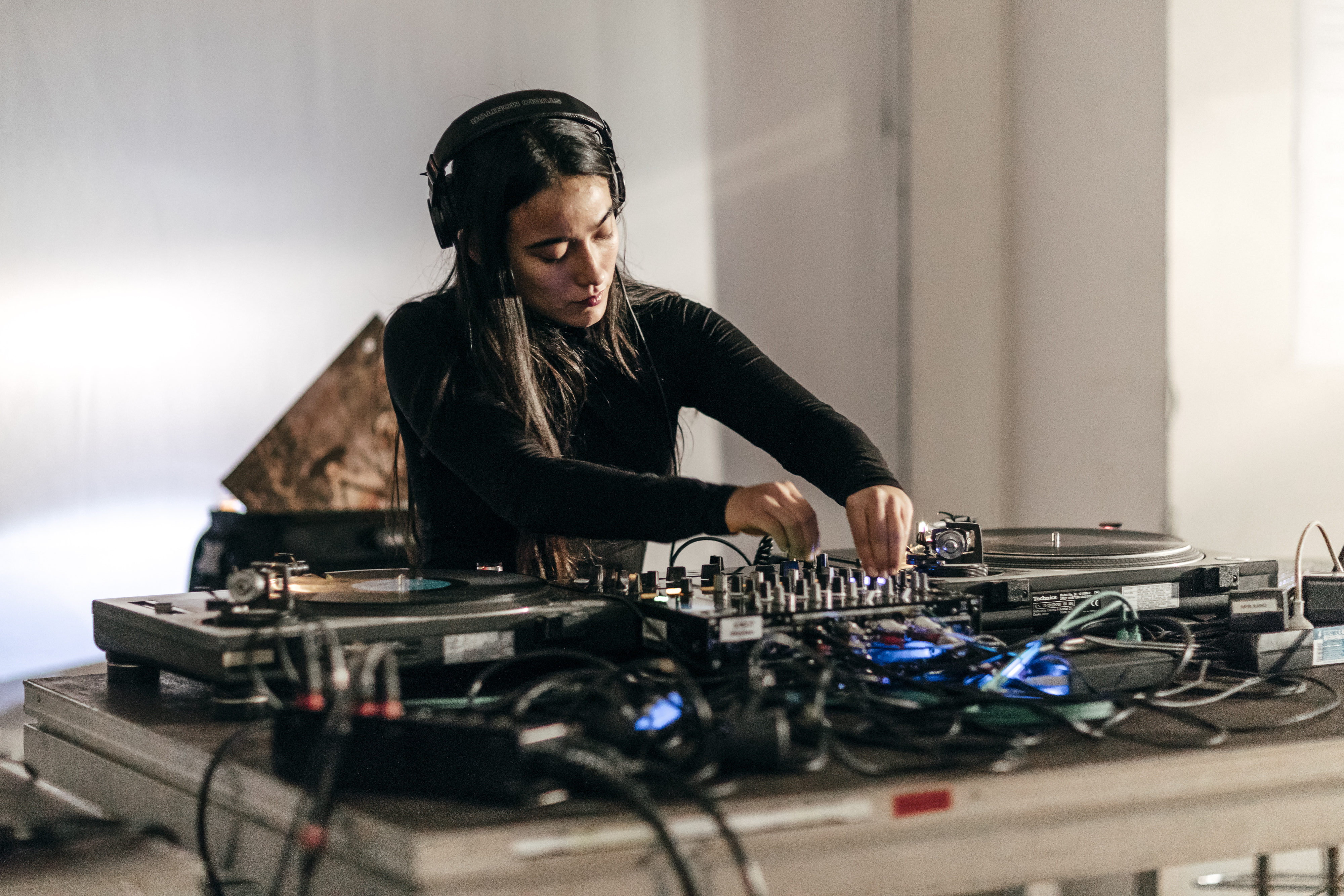
Mika Oki
ARCHIVE
Free, no reservations required
In collaboration with the City of Paris’ Music Library, as part of the Canopée# Estiv’Halles Weekend
For the second consecutive year, the network Canopée#, which consists of several cultural institutions in the Les Halles neighbourhood, has come together around a common event, Canopée# Estiv’Halles on 2-3 July. The City of Paris’ Musical Library and the Bourse de Commerce have collaborated to invite Mika Oki and Cheb Gero to delve into the music library’s archives for their DJ sets.
Mika Oki
17h45 – 18h45
Mika Oki is a Franco-Japanese visual artist based in Brussels who uses video, sound, and electro-acoustics to create abstract textures and mental images that perfectly stitch together the worlds of club rhythms and ambient experimentation. Her mixes represent a broad musical spectrum that ranges physically and emotionally from UK Bass to IDM, acid, jazz, indus, and electro-acoustic to form a controlled chaos that keeps dancers in a constant state of suspense. She has created 24-hour-long performances involving dancers, performers, and poets, and she has performed at festivals such as Atonal, Nyege Nyege, and Meakusma. She produced “As Clean As I Was” for the compilation on Metaphore Industrie. A radio programmer and event organiser, Mika Oki directs the Belgian branch of LYL Radio. She fights extensively for women’s place in the contemporary music scene alongside the collectives Female: pressure and Psst Mlle.
Cheb Gero
18h45 – 20h30
A devotee of all kinds of music and an incorrigible collector, Cheb Gero uncovers and explores musical worlds. In 2015, driven by a desire to discover the world through music, he launched the label Akuphone. Using an approach that draws on musical archaeology, he highlights the work of artists, musicians, and singers who remain unknown or have been forgotten by “Western” countries. Far from a romanticising or fetishising vision of non-Western music, the label seeks to situate its cultural productions within their historical and political context and present them with an eye to the social and cultural conditions of their initial appearance.